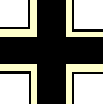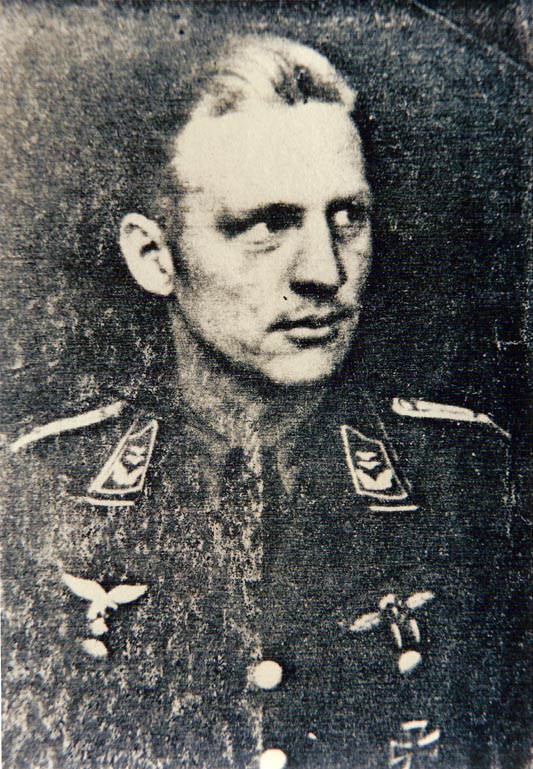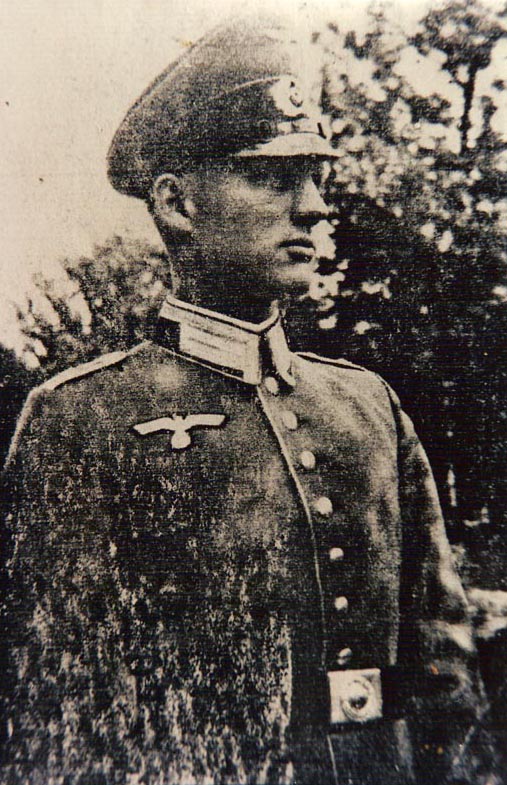
Hauptman Alfons Georg Berger

Hauptman Alfons Georg Berger

Alfons Berger a few months before his death.
Image kindly provided by Verbena Volpi 'Ben' Pastor.
‘Ali’ Berger was born on 28 September 1917 in East Prussia and was the son of the postmaster in Blankenberg, East Prussia, even though he came from a non-Prussian Catholic family. He had an older brother who served in the Heer.
Berger grew up on Hermannstrasse 162-3 in Neukoelln, Berlin, not far from Tempelhof airport and played both piano and violin.
He attended the Classical Lyceum and the army academy in Dresden.
He trained as a pilot and joined KG 51.
At first, he flew the Heinkel He 111 on the Western Front and in the Battle of Britain where he took part in the bombing of Coventry.
On 27 May 1940, the Ju 88 A from 2./KG 51 flown by Leutnant Berger (crew included Unteroffizier Horst Puls) was damaged by AA over Dunkirk. He made a forced-landing at Brüssel-Evere airfield, and the aircraft suffered 40 % damage. Berger was badly wounded while Unteroffizier Puls was lightly wounded.
It was perhaps the incident that was later reported as him being wounded over the Channel but escorted by two RAF fighters to a crash-landing in France. Although injured, he stuck his arm out of the cockpit to free it from pieces of metal that obstructed his view.
On 22 March 1941, Oberleutnant Berger was appointed as staffelkapitän of 11./KG 51.
Then the unit was sent eastward, eventually to the southern Russian front on the versatile Junkers Ju 88. He distinguished himself becoming Staffelkapitän, was considered brilliant and "sehr Nazional" in his second pilot, sub officer Puls' words.
On 19 October 1941, he belly-landed Ju 88 A-4 (WNr. 2549) at Nikolayev airfield after forgetting to lower the landing-gear. The aircraft suffered 40 % damage.
He left the position as staffelkapitän of 11./KG 51 on 20 November 1942.
In January 1943, he was appointed staffelkapitän of 1./KG 51.
On 27 January 1943, kapitan Aleksey Reshetov led four Yak-1s to engage seven Ju 88s and four Bf 109s. He claimed a shared Ju 88 over Metschelinskaya together with leitenant Fotiy Morozov while leitenant Nikolai Yalizarovich Glazov destroyed a second. Reshetov then made a firing pass against the two German crews as they hung in their parachute straps. In return, both Reshetov’s and Morozov’s Yak-1s were hit by the gunners of the other Ju 88s. KG 51 lost two Ju 88s. One was Ju 88 A-4 (WNr 4092) from 1./KG 51 piloted by Oberleutnant Berger, which was shot down (probably by Reshetov and Morozov). This was Berger’s third mission of the day and when hit, he urged his crew to parachute, which two managed to do (co-pilot Felwebel Horst Puls and Unteroffizier Josef Schenag). These two were later rescued, wounded, by members of SS Division Wiking patrolling the no man’s land. Several hours later, the same Wiking soldiers found Berger’s body, along with the beheaded corpse of his ventral gunner Unteroffizier Hans Sachs.
Berger was posthumously promoted to Hauptmann with effect from 1 January 1943.

Alfons Berger in around 1939 in Dresden.
Image kindly provided by Verbena Volpi 'Ben' Pastor.
Sources:
Luftwaffe Officer Career Summaries - Henry L. deZeng IV and Douglas G. Stankey
Russian Fighter Aces of 1914-1953 years
Stalingrad – The Air Battle: 1942 through January 1943 – Christer Bergström, 2007, Chevron Publishing Limited, ISBN 978-1-85780-276-4
Additional information kindly provided by Verbena Volpi 'Ben' Pastor and Ondrej Repka.

